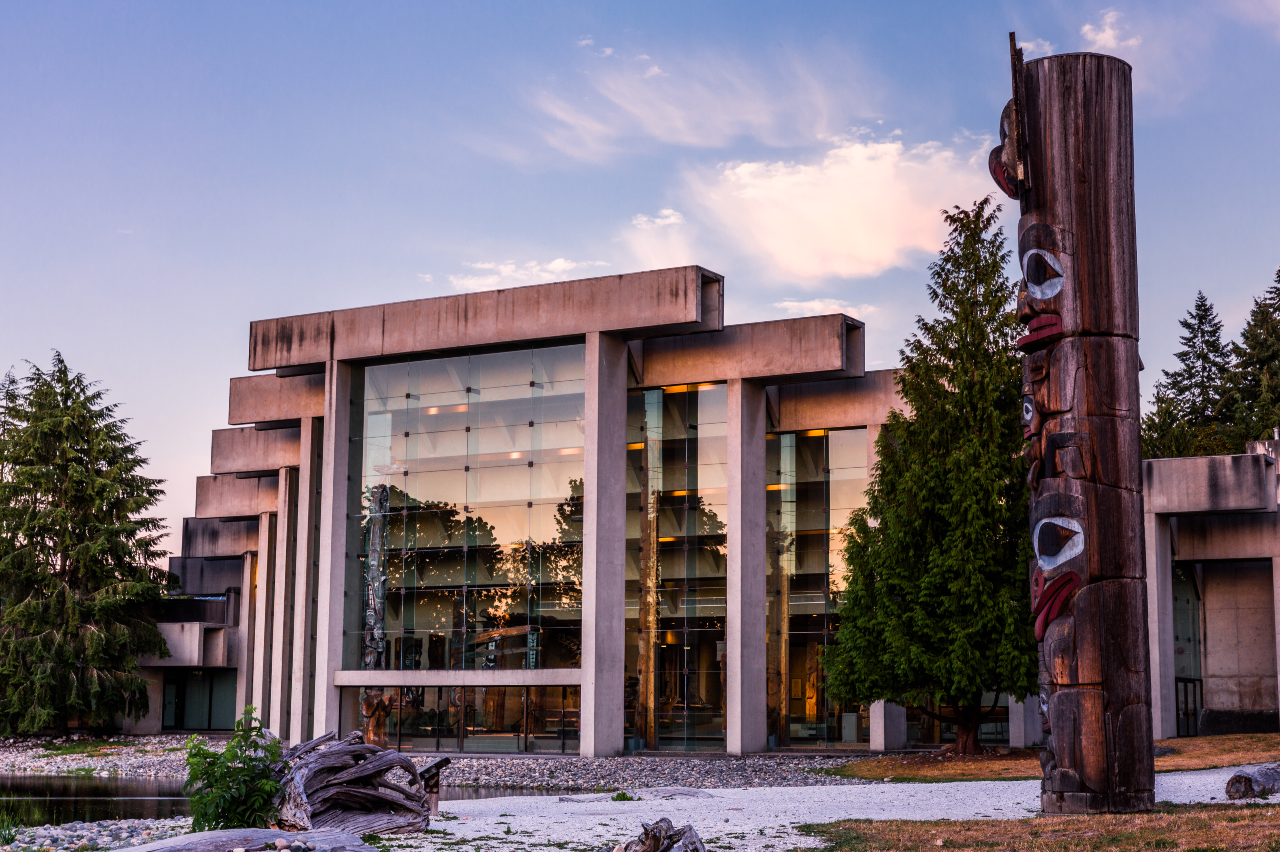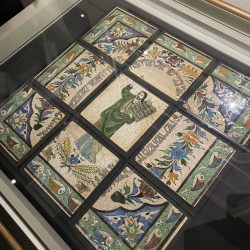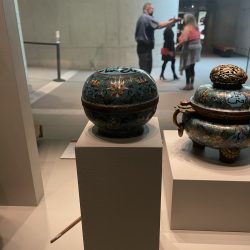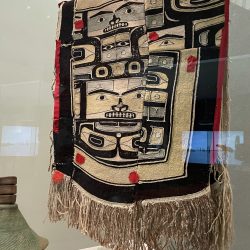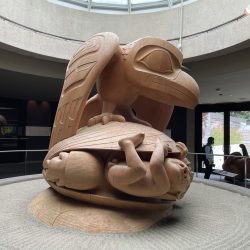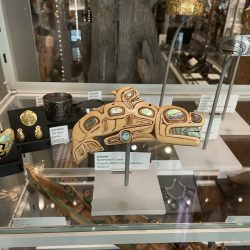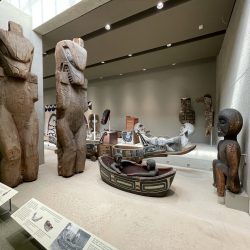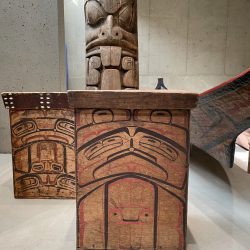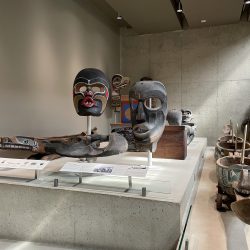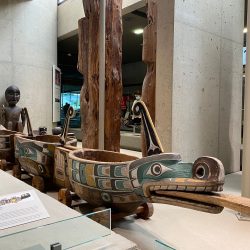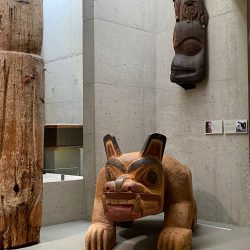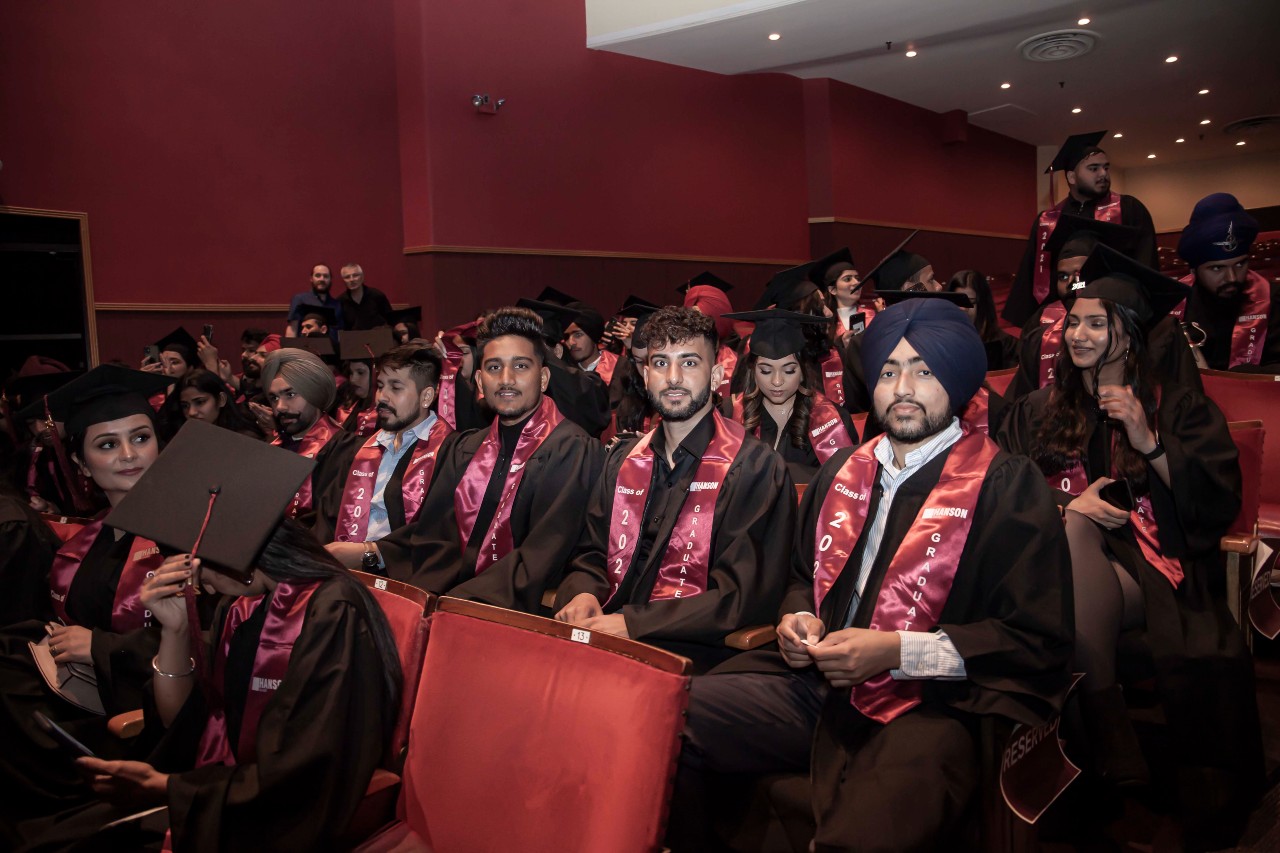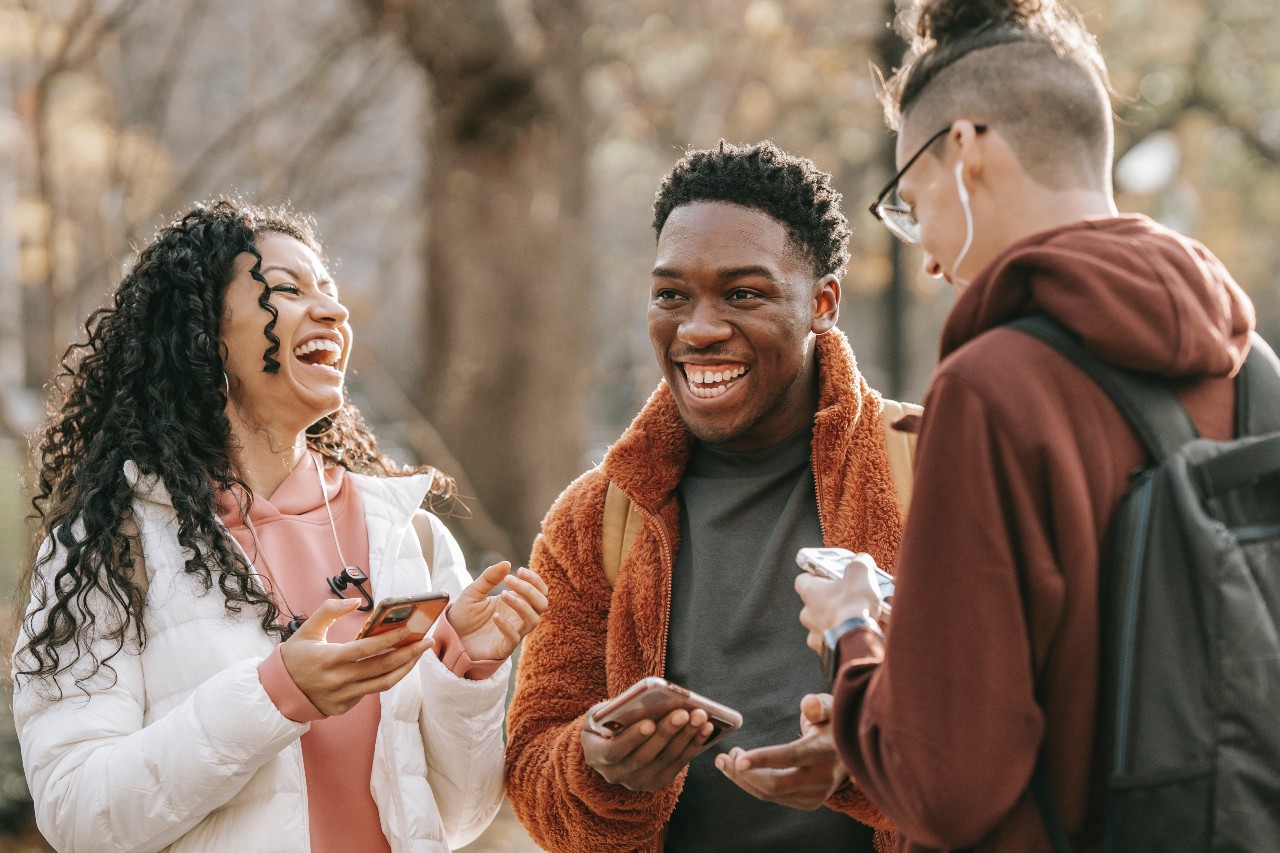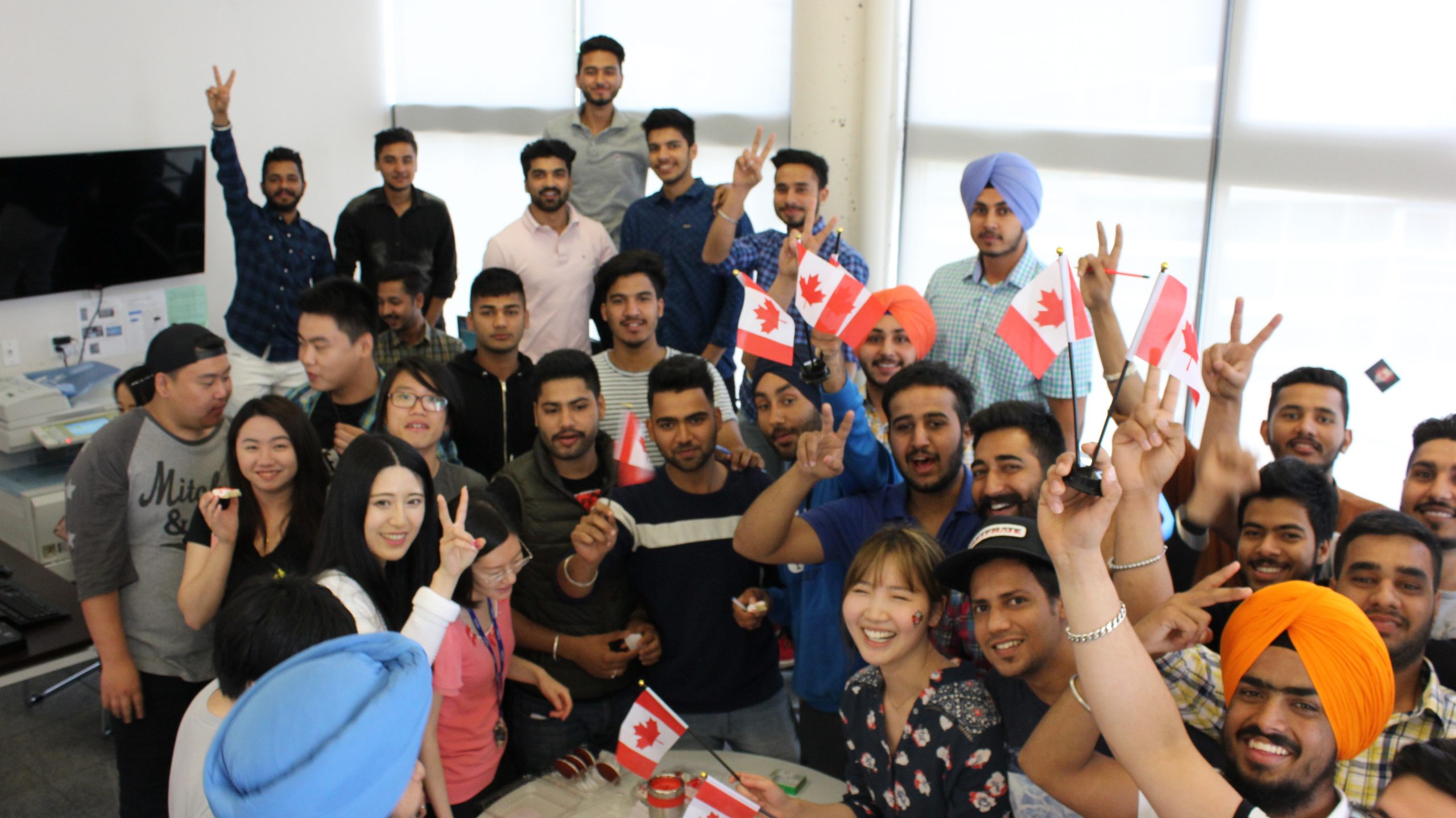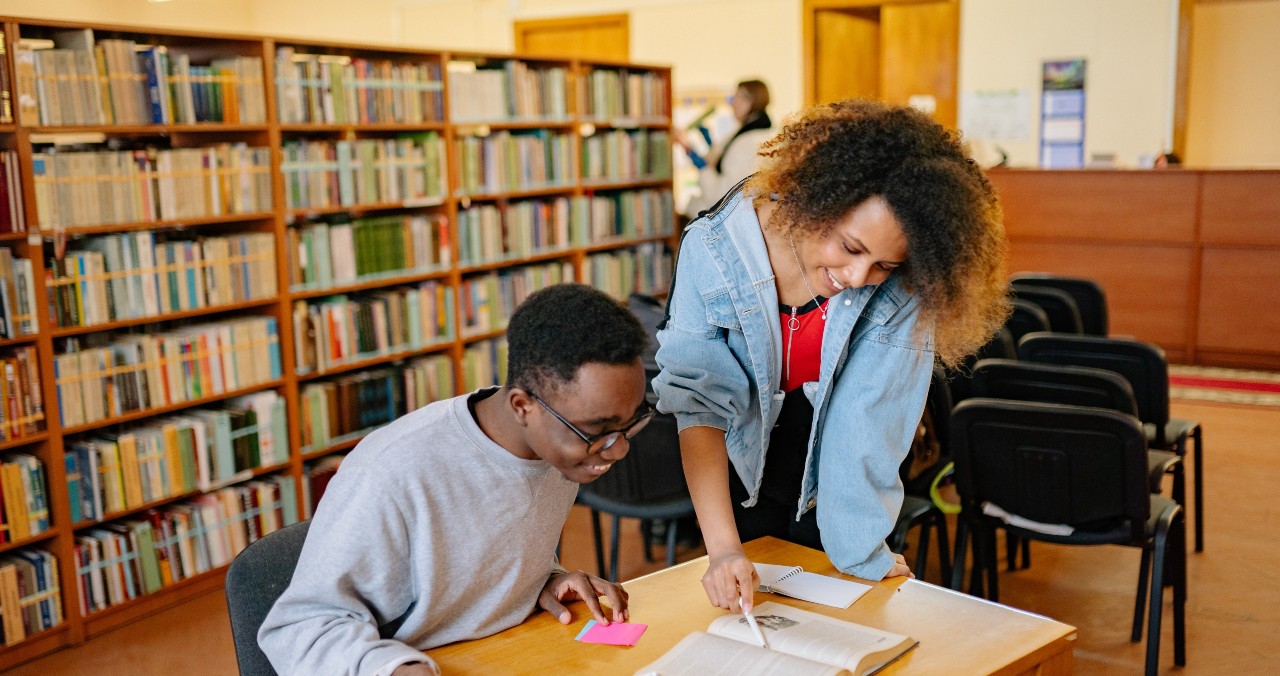After several months of anticipation, the EDIC was able to complete a field trip to the Museum of Anthropology (MOA) in July. The primary purpose of the trip was to further educate ourselves on the culture, customs, and history of our local Indigenous communities. After we arrived at the museum, we quickly realized that our learning journey would expand beyond our own borders to include communities on a global scale.
If you haven’t been yet, MOA showcases artifacts and exhibits from all over the world. What became apparent to our group is that although each country, culture, and group of people represented had their own folktales and stories, their artifacts showed common threads in their stories of origin, legends, symbols, imagery, and more. For example, we noticed that many cultures utilized their own version of a witch in woods as a method of teaching children to beware of strangers. Another example is the recording of a flood as a central occurrence in many different corners of the world.
While finding what we have in common with each other was at times exciting, there are some global influences that made us pause and reflect on our own roles as representatives of Hanson College. This was especially apparent for countries or people groups who experienced colonization. A change in the artifacts from these nations can be observed after coming under the power of foreign rule. The influence that Eurocentric views had on the development of nations cannot be ignored when exploring the exhibits at MOA. This assertion of power from and long-lasting presence in other countries caused us to recognize our own privilege and duty to provide equitable outcomes to our students. As international educators, we should refrain from committing the same mistakes of objectifying, commoditizing, and oppressing learners whom we welcome to Canada.
Our visit at MOA ended too quickly for many of us, as there is simply so much to see and learn about. And yet, we also left knowing that no matter how much time we spent there, we could never fully understand the history and culture of a people group based on artifacts alone. To know and understand, we need dialogue and authentic relationships. In our capacity as an international college, we should strive to build relationships of trust with students and stakeholders involved in education. Let’s keep working together to create a sense of safety and belonging for faculty, staff, students, and friends at Hanson.
